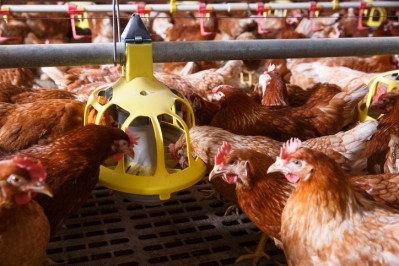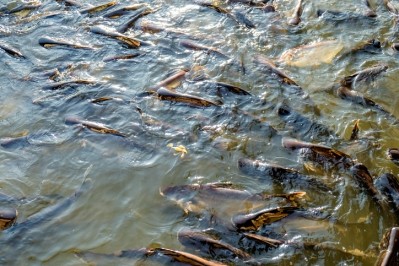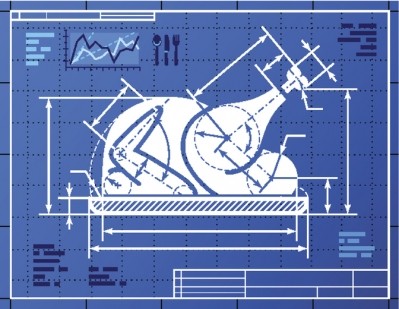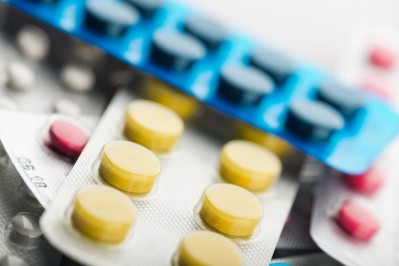'We now understand at a molecular level how these probiotic strains can kill these pathogenic species'
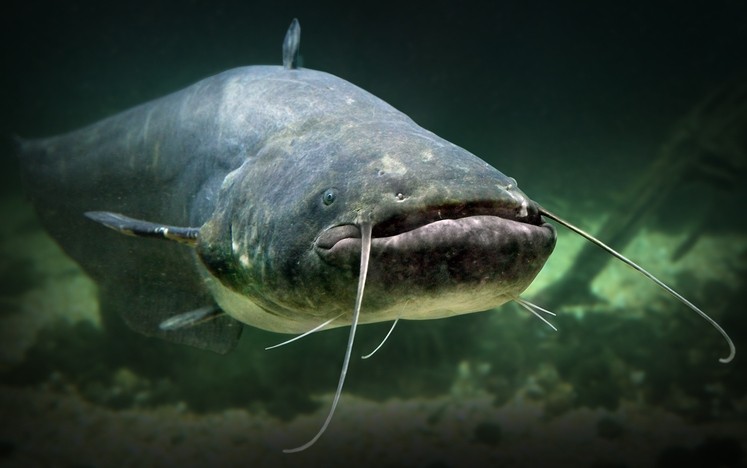
Interest in exploring the use of probiotics in catfish diets started as a way to prevent catfish diseases like those from the bacterial pathogen linked to the “hole in the head” disease, Edwardsiella ictaluri, and have expanded to include Aeromonas hydrophila, said Mark Liles, lead researcher and professor of biological sciences at Auburn University.
“We now understand at a molecular level how these probiotic strains can kill these pathogenic species, by production of multiple metabolites – think of that as a drug-delivery system that we can feed to the fish as part of their normal diet, but without the same issues of disease resistance developing or antibiotics present within the tissues of the fish,” he told FeedNavigator. “By feeding these probiotics to the fish, instead of adding them to the water, we also make sure they have more targeted effects on the fish in terms of growth performance enhancement and disease control.”
In the feeding and water quality trial, an Auburn University-based research team explored the use of a selected strain of Bacillus velezensis in the diets of channel catfish and the influence of the feed additive on catfish growth, pond water quality and fish intestinal microbiomes.
The research was published in the journal, Aquaculture.
The research team found that when added to the diets of fingerling catfish growth improved by 20.4% or 32.6%, depending on if the catfish originated in an aquarium or raceway, compared to control group fish. However, there were no major differences found in the intestinal microbiota or in pond microbiota.
But pond water quality improved for fish receiving the supplanted feeds, they said. There were reductions in total phosphorus, total nitrogen, and nitrate.
“The significant reductions in nitrogen and phosphorus in pond water samples could be very meaningful in achieving better water quality and avoiding problems such as algal blooms that can arise from eutrophic conditions in intensively farmed fish ponds,” Liles added.
Why use probiotics in channel catfish diets?
Channel catfish is an important aquaculture species in the US because it grows quickly, is low in costs and has “proficient reproduction capabilities,” the researchers said.
Feed efficiency, however, remains important in aquaculture, they said. Following the shift from use of fish meal in diets to soybean meal, there has been a drop in feed conversion and fish growth performance.
Unused phytate and other nutrients can be released in fish waste and increase the eutrophication of an aquaculture pond, they said. Phytase can be added to feed to improve the use of dietary phosphorus and the enzyme can be fermented from microorganisms used in probiotics.
Adding specific probiotic strains to fish feed could influence both fish growth and pond water quality, the researchers said.
Disease is also a challenge that aquaculture producers face, they said. However, few antibiotics are approved for use in catfish and concerns on the development of antibiotic-resistant bacteria highlight the need for alternative ways to address disease.
The Bacillus velezensis AP193 strain was picked for the study as it was already known to perform well in terms of preventing disease, said Liles.
“They are derived from the root (“rhizosphere”) of a soybean plant, and the catfish are being fed with a soy-based diet,” he said. “This combination of a soy-derived probiotic with a soy-based diet is why we think this works so well in farmed catfish, and likely would in other fish species fed with a plant-based diet as well.”
“Since the global aquaculture industry is moving away from fish meal-based diets this could be a viable alternative for many farmed fish species in enhancing fish growth performance with plant-based feed,” he added.
Feed trial highlights
In the pond feeding trial, 861 fingerling catfish were given either a supplemented or control diet for 10 weeks, the researchers said. For the supplemented diets, the probiotic spores were spray-coated at 8% of the dry weight onto commercial feed and coated with a 5% fish oil.
Ponds contained two different groups of fish raised either in aquaria or pond-based raceway systems, they said. Aquaria fish weighed about 15g and raceway fish were older and weighed about 40g and fish were also marked to differentiate between point of origin.
“By including fish that had two different origins, stages of development and environmental conditions in which they were raised, we could evaluate how well the probiotics impacted the growth of both groups of fish,” Liles added.
Sample fish were collected at 10 weeks and weighed to establish growth performance, the researchers said. Intestinal samples were gathered before the start of the feeding trial and at the end of the trial and pond water samples were taken at the start of feeding and after 4 and 10 weeks of feeding.
Water samples were checked for total ammonia nitrogen (TAN), nitrite-nitrogen, nitrate-nitrogen, total nitrogen (TN) and total phosphorus (TP), they said. The pond water was also checked for the presence of the probiotic bacterial strain.
Results and going forward
In the pond-based feeding trial, fish receiving the supplemented diet demonstrated improved weight gain compared to control group fish, the researchers said. However, no feed conversion ratio was calculated following bird predation.
“Both groups of fish had significant increases in growth performance of 32-40% relative to fish in the control ponds, so this was good evidence that strain AP193 enhanced fish growth performance under these differing fish origins and environmental history,” added Liles.
There were some shifts in intestinal microbiota for catfish as fish on the supplemented diet had a decrease in the Bacteroidetes taxa along with Paludibacter and Parabacteroides spp. and an increase in the abundance of Proteobacteria taxa, they said. Fish on both diets saw a drop in Pseudomonas spp. and Firmicutes taxa, but there were no significant, diet-related changes to the levels of bacterial taxa in the pond water.
Pond water showed a change in total phosphorus, total nitrogen and nitrate-nitrogen following the feeding trial, they said. Levels of all three fell in the ponds housing fish on the supplemented diets.
The probiotic used in the feed generates phytase, which breaks down phytate, said Liles. Adding, “We think that is a major mechanism for breaking down phytate in probiotic-fed fish.”
However, less is known about nitrogen metabolism, he said.
“We’re also interested in the fate of the N and P – are these nutrients being taken up by the fish preferentially in probiotic-fed fish? It would make sense that because we are combining a soy-derived probiotic with a soy-based feed, that the feed conversion efficiency is higher,” said Liles. “We observe that in probiotic-fed fish they are literally digesting their diet to completion, and you can visually see the differences in the gut contents of probiotic- versus control-fed fish, with a lot more undigested feed left in the GI tract of control fish.”
“That’s certainly why we are observing such significant improvements in growth performance,” he added.
However, there remain additional questions including what the long-term effects are of using “probiotic-amended diets,” in terms of water quality, pond water microbiome and algal blooms, said Liles.
“The next experiments we’d like to conduct would be replicated production pond studies, where the fish in entire ponds are being fed with or without the probiotic-amended feed,” he said. “If catfish producers can not only obtain better growth performance, but also disease control and improved water quality through the adoption of this technology, then we hope this can benefit many people who depend on catfish farming for their livelihood.”
If future testing remains positive, the feed additive could be scaled up and generated relatively inexpensively, he said. “In a single milliliter of culture medium, we can cheaply grow the Bacillus velezensis to well over 100 million bacteria per milliliter,” he added.
“When you get to much larger scales then you are literally producing trillions of bacteria,” he said. “These bacteria have the very useful property of making an endospore – a very hardy, metabolically inactive state that makes them extremely shelf-stable and able to be applied to feed as a powder or a liquid suspension.”
The bacteria can be transported and stored for an expended period, Liles said. However, the best way to apply them to feed tends to be in an oil-based topcoat, rather than adding them before the extrusion process.
The cost of the probiotic would depend on the scale at which it was produced, he said.
“If we were to top-coat catfish feed with Bacillus spores at a dosage of 1 to 10 million spores per g of feed, and were doing a large-scale production of spores, then we think we could get the costs down to a few dollars per ton of feed.
“If you compare that to the much higher costs of antibiotic-medicated feed, and the consequences of antibiotics like florfenicol to the microbiome of the catfish, this is a relatively inexpensive dietary amendment,” he said.
Additionally, the group is about to start a research trial looking at use of a blend of probiotic strains to improve growth performance in catfish, Liles said.
“We have a really massive collection of genome sequences from a lot of Bacillus species (1,200 and growing) that include these probiotic strains that work well in fish, and we’re interested in learning more about what makes these probiotic strains grow and the kinds of metabolites they produce,” he added.
Source: Aquaculture
Title: Bacillus velezensis AP193 exerts probiotic effects in channel catfish (Ictalurus punctatus) and reduces aquaculture pond eutrophication
Authors: C. Thurlow, M. Williams, A. Carrias, C. Ran, M. Newman, J. Tweedie, E. Allison, L. Jescovitch, A. Wilson, J. Terhune, M. Liles
DOI: doi.org/10.1016/j.aquaculture.2018.11.051
